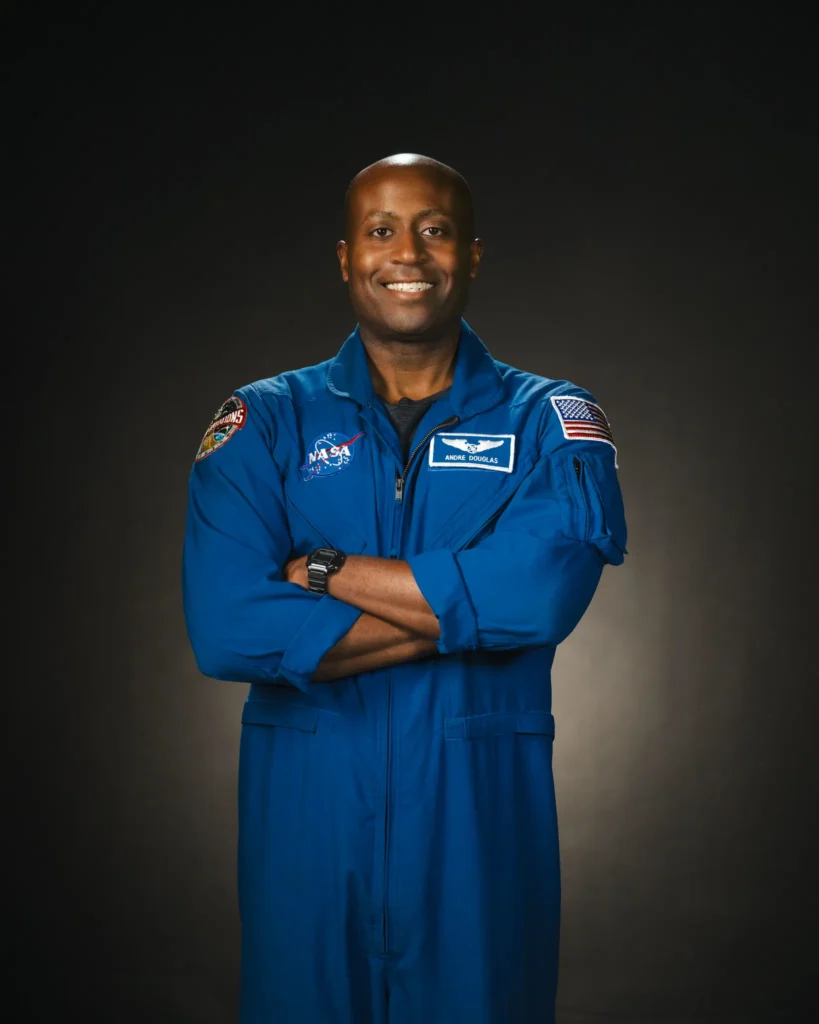Science
Meet the Backup Crew for NASA’s Historic Artemis II Mission
Meet Andre Douglas & Jenni Gibbons, backup crew members for NASA’s Artemis II mission, shaping the future of space exploration with their expertise and dedication. 🚀 #ArtemisII #NASA #CSA
Exciting news from NASA – astronaut Andre Douglas and CSA astronaut Jenni Gibbons have been selected as backup crew members for the upcoming Artemis II test flight, a crucial step in NASA’s ambitious Artemis campaign aimed at returning humans to the Moon and preparing for missions to Mars.

Andre Douglas, a highly qualified astronaut with a diverse background, stands ready to support the Artemis II mission should the need arise. Hailing from Virginia, Douglas brings a wealth of experience from his time in the U.S. Coast Guard and his work at Johns Hopkins University Applied Physics Laboratory. His educational achievements, including a doctorate in Systems Engineering, have prepared him well for the challenges of deep space exploration.
Jenni Gibbons, representing the Canadian Space Agency, is equally poised to step into action for Artemis II. With a background in Mechanical Engineering and research experience in microgravity environments, Gibbons has proven her dedication and expertise within Canada’s space program. Her role as backup crew member underscores the importance of international collaboration in space exploration.
The selection of Douglas and Gibbons highlights NASA and CSA’s commitment to ensuring mission readiness and preparedness for any eventuality. Their training alongside the primary crew members for Artemis II reflects the meticulous planning and attention to detail characteristic of human spaceflight missions.
The Artemis II mission
Artemis II, scheduled to launch on the powerful SLS rocket, will serve as a crucial milestone in validating the technologies and capabilities needed for sustained deep space exploration. This mission holds significant promise for advancing humanity’s understanding of living and working in space, paving the way for future missions to the Moon and eventually Mars.
As we eagerly anticipate the launch of Artemis II and the groundbreaking discoveries it promises to bring, we celebrate the dedication and expertise of astronauts like Andre Douglas and Jenni Gibbons. Their contributions exemplify the spirit of exploration and collaboration that drives humanity’s quest for knowledge beyond our planet.
Join us in wishing the backup crew members and the entire Artemis II team the best of luck as they embark on this historic mission, paving the way for a new era of space exploration under NASA’s visionary Artemis campaign. Stay tuned for more updates as we journey together towards the stars.
Learn more about NASA’s Artemis campaign at:
About the Artemis Program
The Artemis program is a Moon exploration program that is led by the United States’ National Aeronautics and Space Administration (NASA) and was formally established in 2017 via Space Policy Directive 1. The Artemis program is intended to reestablish a human presence on the Moon for the first time since the Apollo 17 moon mission in 1972. The program’s stated long-term goal is to establish a permanent base on the Moon to facilitate human missions to Mars.
Two principal elements of the Artemis program are derived from the now-cancelled Constellation program: the Orion spacecraft and the Space Launch System (as a reincarnation of Ares V). Other elements of the program, such as the Lunar Gateway space station and the Human Landing System, are in development by government space agencies and private spaceflight companies. This collaboration is bound together by the Artemis Accords and governmental contracts.
The Space Launch System, Orion spacecraft and the Human Landing System form the main spaceflight infrastructure for Artemis, and the Lunar Gateway plays a supporting role in human habitation. Supporting infrastructures for Artemis include the Commercial Lunar Payload Services, VIPER rover, development of ground infrastructures, Artemis Base Camp on the Moon, Moon rovers and spacesuits. Some aspects of the program have been criticized, such as the use of a near-rectilinear halo orbit and the sustainability of the space program.
Orion’s first launch on the Space Launch System was originally set in 2016, but faced numerous delays; it launched on 16 November 2022 as the Artemis 1 mission, with robots and mannequins aboard. According to plan, the crewed Artemis 2 launch is expected to take place in late 2025, the Artemis 3 crewed lunar landing is scheduled for late 2026, the Artemis 4 docking with the Lunar Gateway in late 2028, the Artemis 5 docking with the European Space Agency’s ESPRIT, Canada’s Canadarm3, and NASA’s Lunar Terrain Vehicle in early 2030, and the Artemis 6 docking which is expected to integrate the Crew and Science Airlock with the Lunar Gateway station in early 2031. After Artemis 6, NASA expects yearly landings on the Moon to occur from then on.
The science section of our news blog STM Daily News provides readers with captivating and up-to-date information on the latest scientific discoveries, breakthroughs, and innovations across various fields. We offer engaging and accessible content, ensuring that readers with different levels of scientific knowledge can stay informed. Whether it’s exploring advancements in medicine, astronomy, technology, or environmental sciences, our science section strives to shed light on the intriguing world of scientific exploration and its profound impact on our daily lives. From thought-provoking articles to informative interviews with experts in the field, STM Daily News Science offers a harmonious blend of factual reporting, analysis, and exploration, making it a go-to source for science enthusiasts and curious minds alike. https://stmdailynews.com/category/science/
